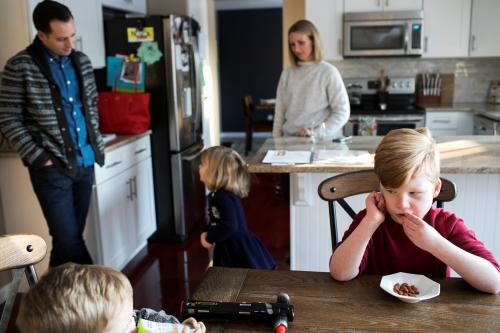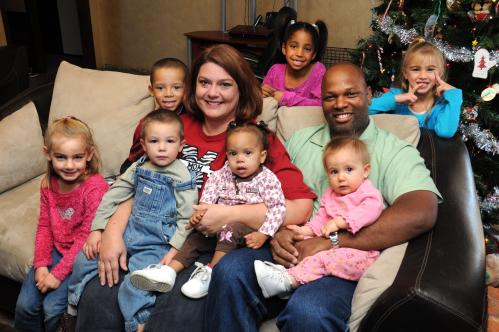Naomi Schaefer Riley, a resident fellow at the American Enterprise Institute in Washington, DC, recently wrote a provocative New York Times opinion piece titled, “There Are Worse Things Than Foster Care.”
The Riley column highlights a longstanding debate in the child protection community: When children are abused or neglected, officials must decide whether they should be removed from their home to protect their safety. If the child is removed, officials must decide who will care for the child and what the parents must do to get the child back. These decisions are made more complex and risky when parental drug addiction is involved, which is the case in about one third of removals. In short, the child protection world is complex and there are no formulas that guarantee good outcomes.
A close examination of a recent report written by the New York City Department of Investigation, and cited by Riley, shows that the conclusions she draws from the report about the city’s child protection program are questionable. The Department of Investigation report shows that many children who have been removed from their homes are further maltreated by their parents when the parents are allowed to visit them or when the children are returned home on a trial basis. Riley suggests that the New York City child protection agency takes a greater risk and tolerates this situation because it has a bias toward reunifying families that have been separated. Moreover, she believes that most child welfare agencies and family court systems in the county aim to keep families together, even in the face of maltreatment by the parents, and “even if it can mean risking a child’s safety.”
The child protection world is complex and there are no formulas that guarantee good outcomes.
While we agree that anytime a child is hurt, the child protection system must accept some of the responsibility, we were surprised by Riley’s broad generalization that the foster care system’s commitment to family reunification is intentionally placing children at risk of harm. This framing of the dilemma faced by child protection agencies in New York City and elsewhere is typical of too much of today’s media coverage of child abuse and neglect, which often favors dramatic headlines over factual analysis and pragmatic solutions. It also ignores the legal and practical complexities of child protection in which practitioners and the courts must balance the rights of children and their parents while also considering the capacities and limitations of the various interventions available. Once children are removed from their homes, there is no assurance that the alternative settings will support the child’s development or safety.
Another important issue is that these foster care records formed an important part of the evidence used by the Department of Investigation. The records for 2016 and 2017 showed that about 1,100 of the children placed in foster care over this period had been maltreated again and that a majority of the maltreatment was committed by birth parents during visits or trial reunions, standard parts of the procedure for attempting to reunite parents and children. Nearly 90 percent of these cases of repeat maltreatment were neglect and not abuse. Neglect, while still of great concern, is generally considered to pose less risk to the child’s well-being, especially when it occurs on a short-term basis as it did in most of these cases involving visitation.
Based on these and other data, the Department of Investigation issued 12 recommendations to the New York Administration for Children’s Services for corrective action, all of which were accepted by the Administration. The Administration began almost immediately to implement the recommendations while the Department of Investigation put in place a system for following up to be sure their recommendations are being implemented.
These facts, all published by the Department of Investigation, demonstrate that New York City is following abuse and neglect cases that go awry, that the Department is requiring the Administration for Children’s Services to take corrective action, and that the Department is holding the Administration accountable for addressing the problems by working with the contractors that implement the city’s programs for both protecting children in foster care and children who are returned home.
Following cases from the first instance of abuse or neglect that come to the attention of children’s services to whether the child is removed or stays with the family; if removed where the child is placed; and how long the child is allowed to stay in a particular setting, by no means settles all the issues that child serving agencies must address. Every one of these steps, or some subset of them, can be repeated, sometimes more than once. Although there is no formula for making the best decision at each of these stages, this review of the course cases can take gives a good idea of the complexity faced by Children’s Administration officials.
As if the complexity faced by child protection agencies reviewed here is not enough, a major issue that envelopes the entire system is the shortage of resources that characterize the families of these children. In general, families that become involved with children’s services are highly disadvantaged. They are almost all poor; they tend to be minorities; they live in the nation’s most dangerous neighborhoods; they often attend inferior and even unsafe schools; and they are subject to strong and sometimes unfair tactics by the local police. A result of this disparity in disadvantage is that poor and minority children are much more likely to be caught up in the child protection system than children from more advantaged and white families. In 2016, white children made up 51 percent of American children but only 44 percent of those in foster care. By contrast, black children made up 14 percent of children but 23 percent of those in foster care.
Nearly everyone agrees that child safety is the top priority, but achieving permanent placements is a close second – and a tested way to achieve safety and promote child development.
Riley acknowledges that race and poverty are important parts of the story with her statement that “these points are legitimate and we shouldn’t dismiss them,” but she does not go far enough. Many officials pretend, in defiance of all reality, that black, brown, and indigenous families are more of a threat to their own children than the circumstances in which these children live. The result is a foster care system in which poor children of color are disproportionately removed from their families, and are disproportionately likely to age out of the system without permanent family connections, which research shows is likely to have negative long-term impacts.
We are not arguing that the nation’s foster care system is without flaws, or that a child’s safety should not be the top priority. Rather, we question Riley’s criticism of the child protection system for taking such a strong stance against family reunification, and deeming it the main barrier for the prioritization of children’s safety. If we steer the system toward placing a premium on removing maltreated children from their families and placing them in out-of-home care as a remedy to child maltreatment, as Riley seems to prefer, the children may still be at high risk for maltreatment and multiple placements. Nearly everyone agrees that child safety is the top priority, but ach
ieving permanent placements is a close second – and a tested way to achieve safety and promote child development. The more children bounce around to multiple foster family placements or the longer they are removed from their home before reunification or adoption, the higher the risk for negative outcomes. So, why not invest in helping children stay safe in their own families whenever possible, and preventing placement instability and permanent placement in the uncertainties of out-of-home care.
Luckily, recent legislation enacted by Congress is providing a new opportunity and new funds to encourage implementation of just such a system. The Family First Prevention Services Act (FFPSA), enacted into law in February 2018 on a bipartisan basis, creates the opportunity for states to use federal funds to provide greater support through mental health and substance abuse prevention services, parental skills-based programs, and support services for grandparent and relative caregivers, to the families of children who are at risk of having their children removed from home and placed in foster care. FFPSA has the potential to initiate prevention services that will be vital in helping families in need get help before their children are removed and placed into foster care.
Ms. Riley is correct that there are worse things than foster care, but that does not mean we should ignore a system that is making strong efforts to protect children and in many places in the country has successfully dealt with the sharp increase in opioid-related child removals without succumbing to the chaos experienced during the crack epidemic. It does mean that we should continue to invest in prevention services for families whose children are at risk of entering foster care, and promote a culture in which both the child protection system and the families receive support from all sides. Moving toward a system that prioritizes children’s safety is only possible if we support workers in making the decision that is right for the child, regardless of public discourse surrounding the issue.
Jeremy Kohomban is the President and CEO of the Children’s Village, a national partner of the CHAMPS campaign to ensure bright futures for kids in foster care by promoting the highest quality parenting. Ron Haskins is a co-director of the Center on Children and Families at Brookings, which serves as a research partner of the CHAMPS campaign. The authors did not receive financial support from any firm or person for this article or from any firm or person with a financial or political interest in this article. Beyond the aforementioned affiliations, they are currently not an officer, director, or board member of any organization with an interest in this article.
The Brookings Institution is committed to quality, independence, and impact.
We are supported by a diverse array of funders. In line with our values and policies, each Brookings publication represents the sole views of its author(s).







Commentary
Worse than foster care? Why not imagine something better for maltreated children?
December 13, 2018